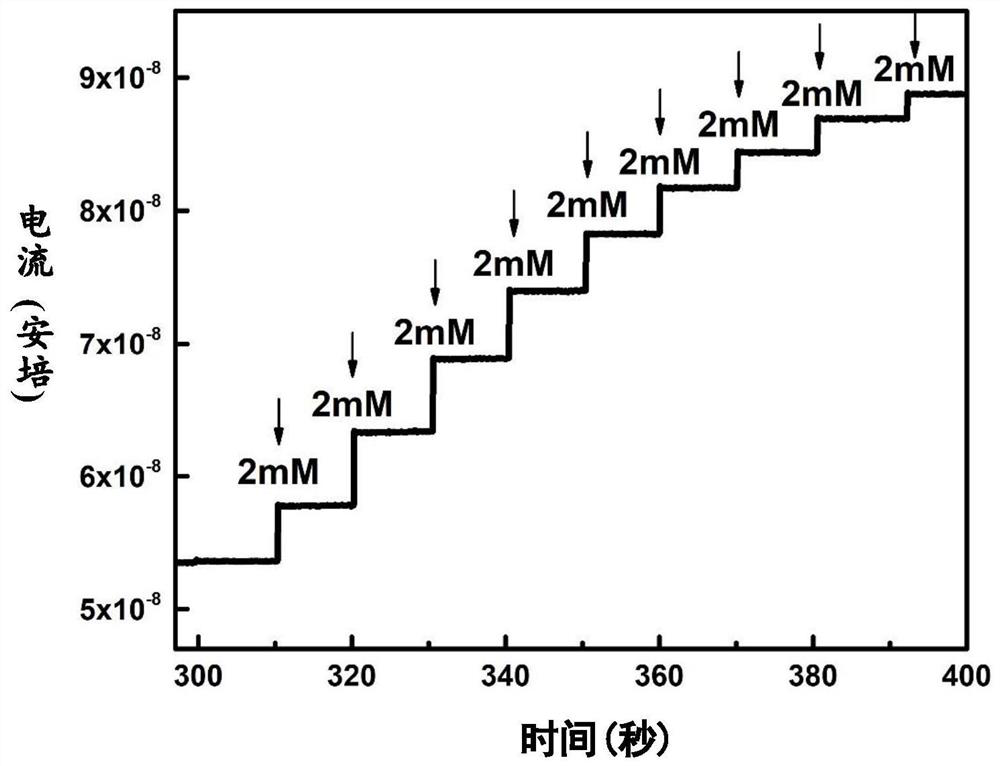Electrochemical glucose sensor and electrode preparation method thereof
A glucose sensor, electrochemical technology, applied in the direction of material electrochemical variables, scientific instruments, instruments, etc., can solve the problems of high cost and large-scale production, inability to accurately and quantitatively detect glucose, and poor detection results.
- Summary
- Abstract
- Description
- Claims
- Application Information
AI Technical Summary
Problems solved by technology
Method used
Image
Examples
specific Embodiment 1
[0020] Take 14 μL of ferrocene polymer solution with a concentration of 5 mg / mL, 6 μL of a solution of glucose oxidase with a concentration of 10 mg / mL, and 0.75 μL of a solution of ethylene glycol diglycidyl ether (EGDGE) with a concentration of 5% v / v. Mixed and allowed to stand for 0.5 hours.
[0021] Take 3 μL of the above mixed solution and drop-coat it on the surface of the glassy carbon electrode, and place the electrode in a laminar flow hood at 4°C for 18 hours to complete the cross-linking reaction.
[0022] After the cross-linking reaction is completed, the electrode is immersed in PBS buffer (pH=7) to remove non-cross-linked components.
[0023] Further, the electrode can be soaked in 0.1MPBS (pH=7.4) buffer solution for storage until use, and the storage temperature is 4°C.
[0024] Wherein, those skilled in the art know that there can be multiple methods for preparing ferrocene polymer solution, for example:
[0025] 1. Dissolve 200mg of BPEI (polyethyleneimine...
PUM
 Login to View More
Login to View More Abstract
Description
Claims
Application Information
 Login to View More
Login to View More - R&D
- Intellectual Property
- Life Sciences
- Materials
- Tech Scout
- Unparalleled Data Quality
- Higher Quality Content
- 60% Fewer Hallucinations
Browse by: Latest US Patents, China's latest patents, Technical Efficacy Thesaurus, Application Domain, Technology Topic, Popular Technical Reports.
© 2025 PatSnap. All rights reserved.Legal|Privacy policy|Modern Slavery Act Transparency Statement|Sitemap|About US| Contact US: help@patsnap.com


